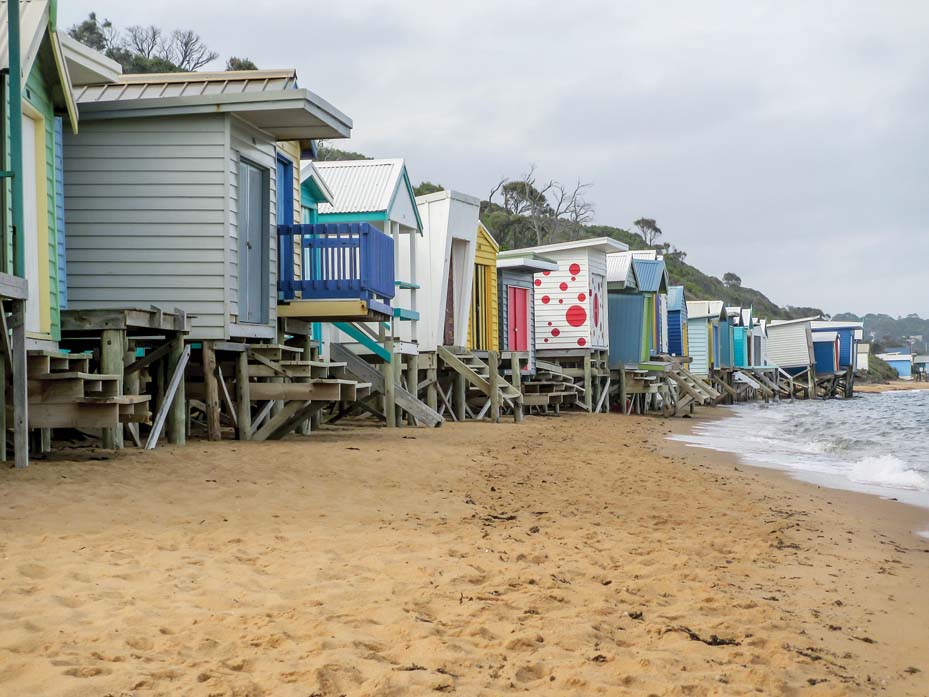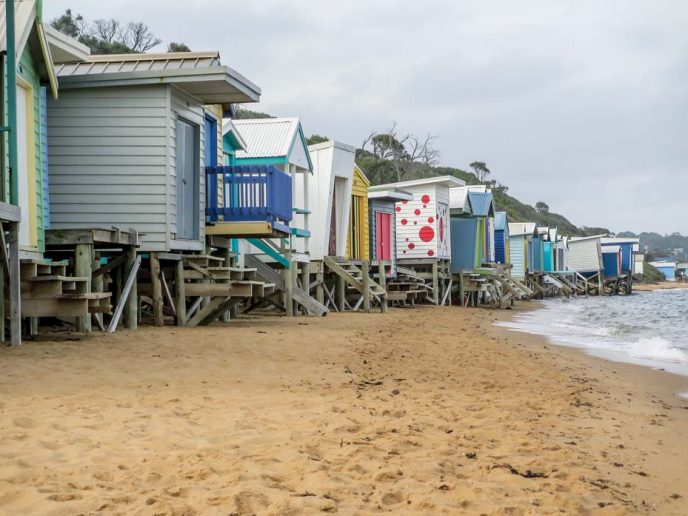
COASTAL protection works being designed to protect cliffs and the Esplanade at Mt Martha North Beach have revived calls for the permanent removal of beach boxes.
Port Phillip Conservation Council says laying rocks and boulders at the base of the crumbling cliffs is “a short term reactionary response”.
The PPCC says the latest consultants’ report recommending removal of the bathing boxes at Mt Martha North is a repeats of one made in 2002 by the former Department of Environment and Conservation.
“Unfortunately, this sound solution was overturned … following sustained political pressure from the newly-formed Mornington Peninsula Boatshed Owners Association, whose major interest was presumably in retaining the privilege of holding a short term licence to occupy the site and financial interests in what was clearly becoming an untenable and inappropriate location for private properties,” PPCC president Len Warfe has told Energy, Environment and Climate Change Minister Lily D’Ambrosio.
Mr Warfe, in a letter to Ms D’Ambrosio, says that since 2002 there have been “increasing threats of cliff instability and potential subsidence of the Esplanade” at Mt Martha.
Copies of the letter have been sent to Planning Minister Richard Wynne and Mornington Peninsula Shire CEO Carl Cowie.
At least five beach boxes have already been demolished since being undermined and classified as dangerous after storms last winter.
Ms D’Ambrosio says $880,000 will be spent protecting the base of the cliff with boulders while the Department of Environment, Land, Water and Planning (DELWP) will have a closer look at “engineering solutions” to prevent further erosion of the beach and cliff (“Beach ‘repairs’ could cost $4m” The News 31/10/17).
The rock revetment works at the cliff base will start in April, and 430 metres of the beach is likely to remain officially closed until the project is completed. The Mt Martha North Beach Group sees the rock revetment going only “some way towards solving our problems”.
Members of the beach group believe a 25 metre long rock groyne should be built north of the beach to prevent further loss of sand. Consultants have put a $330,000 price tag on the groyne (“Call to make a point” The News 5/12/18). Other remedies suggested in the July 2017 final report by Water Technology cost up to $4 million.
Mr Warfe said science showed “groynes invariably relocate the original problem to some other part of the coast – so that it becomes someone else’s problem”.
The PPCC says the devaluation of the beach boxes presents an “opportune time … to compulsorily remove the remains of these dangerous, ugly structures from our public land”.
Mr Warfe said removal costs should be charged to licence holders and permission refused “for rebuilding of any such structures in this highly dynamic section of the coast”.
“As climate change and sea level rise impacts have increased, so too it seems has the frequency of [storms and damaged beach boxes]. So now is the time to intervene to avert future potentially catastrophic events,” Mr Warfe said.
He said dangers to the public caused by the beach boxes, “interference with natural processes and blocking public access to the coast, are all sound reasons to refuse renewal of a licence to occupy the area”.
“The current situation at Mt Martha North presents an excellent opportunity to rid the coast of some extremely ugly and inappropriate structures, which even when intact are an eyesore, and when damaged add further clutter to what would otherwise be magnificent coastal scenery,” Mr Warfe said. “Allowing the rebuilding of these structures on public land and especially in proven vulnerable areas like Mt. Martha North, would be a most unfortunate perpetuation of a failed and outdated policy that is inappropriate for any coastal municipality in the 21st Century.”
Mr Warfe said beach boxes were “elitist relics from a bygone era … allowing ever scarcer areas of public foreshore land to be usurped by private occupiers’ interests”.
“If relocation of a beach box is sought and approved on the basis of the unsuitability of the site due to changed conditions, it would go well beyond protection of what some claim are heritage structures to inflict a new building on a public coastal site that has never had a structure on it,” he said.
“A new replacement building certainly cannot be described as heritage.”




